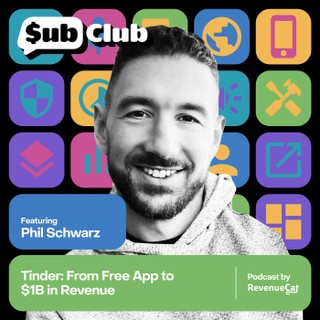
Tinder: From Free App to $1B in Revenue — Phil Schwarz, Corazon Capital
Sub Club by RevenueCat
00:00
What's in Front of the Pay Wall?
Most subscription aps now are finding some blend of premium strategy. But it's so hard too, to gure out what to give away and balance that free to pay. I'd love to hear your thoughts and count o how the team worked through that challenge.
Play episode from 14:10
Transcript


